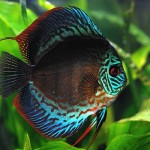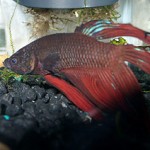Freshwater aquarium filtration is important for the health of your fish. There are basically three different types of filtration which include biological, mechanical and chemical. Almost all types of tanks will require at the minimum biological and mechanical filters to keep the water clean. You should understand each type in order to make the proper decisions for your tank.
Using a mechanical filter will involve removing waste products by continually passing the water through some sort of filter. The filter which can be a piece of foam or another type of porous material will trap the particles. The filter itself will need to be cleaned occasionally or replaced to maintain the clean water flow. There is always the production of solid waste in the tank, so a filter that provides this type of cleaning is a must.
Chemical filters use a certain type of chemical which will remove some of the material that has dissolved in the water. Things such as ammonia, toxic metals and odors can be removed through this type of filter. Basically this filter involves passing the water through carbon or something similar to absorb the pollutants. Again, because the materials used as a filter will eventually also fill up with waste, you will need to replace these as well.
A biological filter is a naturally produced type of organic compound that will convert toxic wastes found in the tank into less harmful products. This helps the fish remain healthy. It acts as a natural filter and will replenish itself. There are various styles of filters for a freshwater aquarium filtration system as well. First you will need to determine how much filtering you will require. A tank that holds between twenty and thirty gallons will likely require a power filter. Styles can include box or canister filters, fluidized bed filters, power filters, sponge filters, underground filters, as well as wet and dry filters.
If you are just getting started it is a good idea to check with others who have some experience with this type of tank. You can avoid many problems by just asking a few questions. Additionally it is always better to have more than needed filtering of the water than to have not enough. Small tanks might only require a box filter in the corner that can be used for mechanical as well as chemical filtering. It will just depend on what you place inside the box.
One factor that also needs to be considered is the flow rate. It is important that the water in your tank is properly cleaned by the filter system that you install. Additionally, all of the water in your tank should run through the filter at least once every four to five hours. Again, it is important to have the flow rate be high enough so if there is any question as to it having a high enough flow rate, you should always choose the higher limit one.
In order to ensure you are getting at least two types of freshwater aquarium filtration, consider adding sponges into the box or power filters. Adding a standard sponge will provide areas for the bacteria to create its colony as well as be protected from the elements that cause them to die off. Remember that keeping the water free from harmful toxins is very important to the success of your tank and this adds a bit of extra protection with very little effort. While it is common knowledge that buying things in bulk can save one money, it is important to realize that many of the chemical filter systems can be actually used up prior to being placed in the tank when you purchase large quantities. For example, activated charcoal which is used in many filters will begin to absorb odors from the air as well as it is exposed. It is possible to buy it in bulk and keep it in useful condition, but it must be stored in an air tight container in order to do so.

Freshwater aquarium filtration systems are necessary for the health of your tank and of your fish. When the fish become sick, they too can further contaminate the water and make other fish sick as well. This is why when you have a sick fish it is recommended that you treat with a strong chemical in order to maintain the health of the others in the tank. Additionally the filter system will need to be completely cleaned after the sickness has been removed from the tank in order to ensure it does not start again due to the filter system containing remnants.

















Leave a Reply